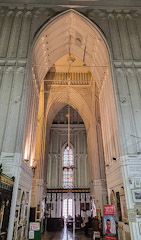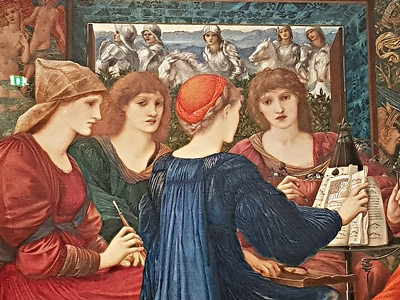UNTIL YESTERDAY EVENING (24th of June 2023), I had never heard of the town of Davis in California. And unsurprisingly, neither did I know of the existence of Davis Senior High School and its baroque ensemble. Had I not attended their concert in Holy Trinity Church in London’s Sloane Square, I would have missed a great treat. Established in the year 2000, the ensemble consists of musicians – string players – aged between 15 and 18. It was founded by its conductor Angelo Moreno, who along with Caitlyn Oher – a student, performed some of the solo violin parts during the concert. Despite the internal air temperature of the church being about 26 degrees Celsius, the musicians played without an interval for an hour and a half. The concert included works by Purcell, Avison, Handel, Couperin, Buonamente, Vivaldi, Geminiani, and Rameau. Each piece was performed superbly. If you did not know, you would not have believed that these excellent musicians were high school pupils. The concert favourably rivalled many baroque performances I have heard by professional orchestras that specialise in baroque music.
The concert was held within a church designed by John Dando Sedding (1838-1891) in a Victorian gothic style, and completed by 1890. Apart from being a spacious church, what makes it special is that most of its decorative features were designed in the Arts and Crafts Movement’s style. Under the influence of people such as John Ruskin and William Morris, the Movement rebelled against industrialisation and encouraged craftsmen, who had been made redundant by the ever-increasing use of machines to manufacture things. The church contains much metalwork with designs characteristic of the Arts and Crafts Movement (a British version of Art Nouveau or Jugendstil). So important is this church as an example of the Movement’s style that Sir John Betjeman named it “The Cathedral of the Arts and Crafts Movement.” The east window, which we could see high above the musicians in the baroque ensemble, was created by the pre-Raphaelite artist Edward Burne-Jones and includes foliage as depicted by William Morris.
Whereas you will have to wait until the Davis High School Baroque Ensemble next visits London, Holy Trinity Church is open every day and welcomes visitors. I recommend that you pay it a visit.




